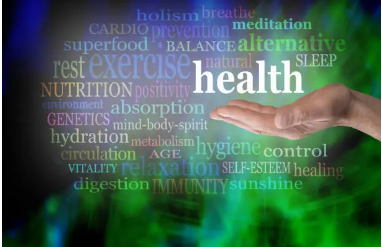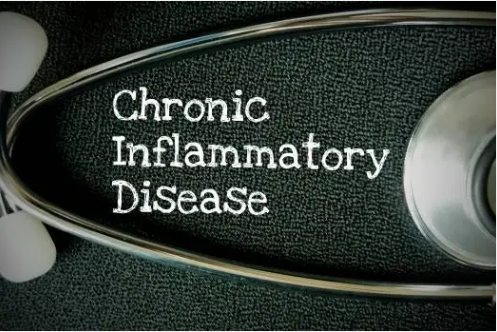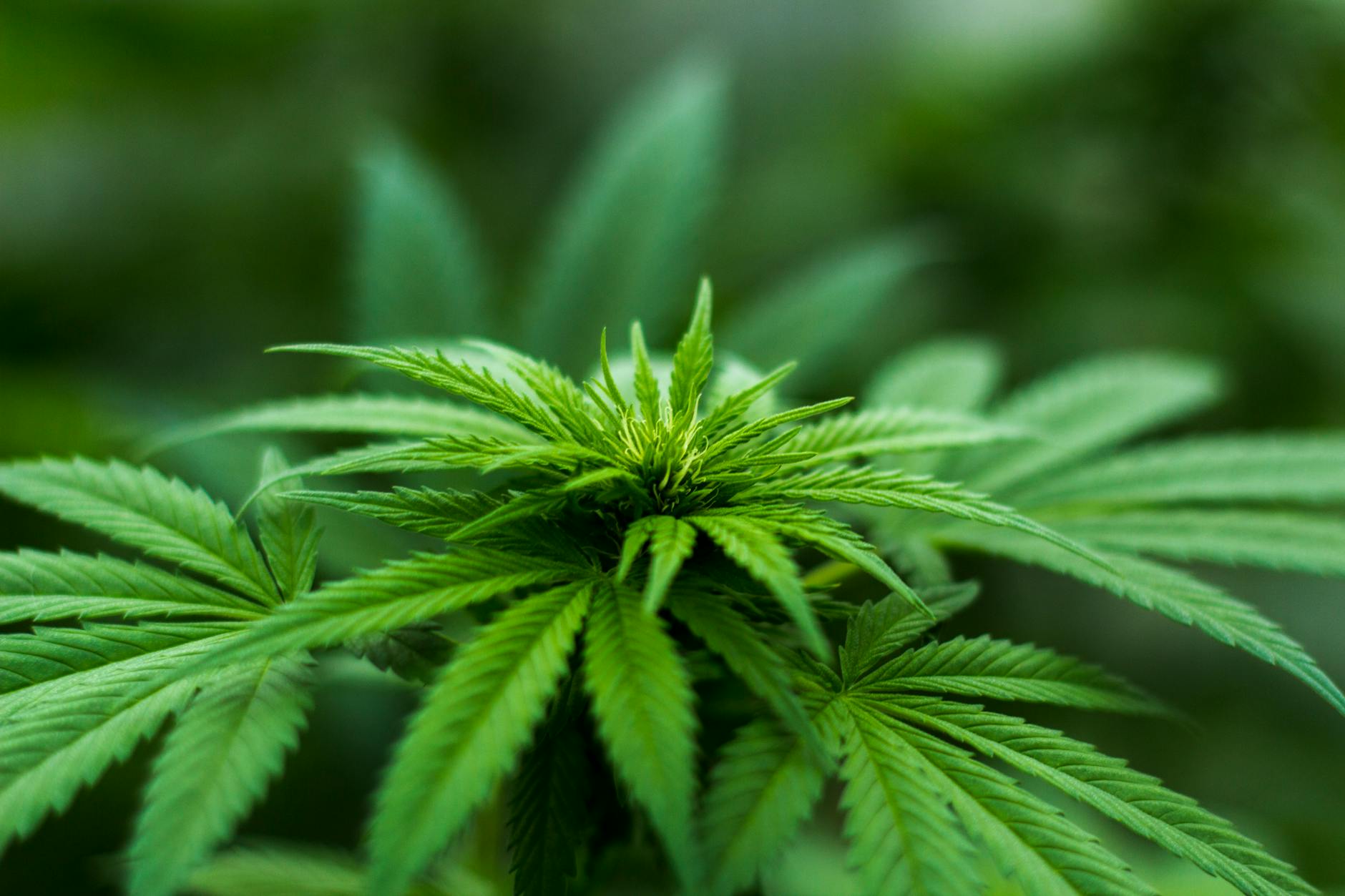
Exploring the World of Alternative Medicine and Holistic Healing
Curious about treatments beyond conventional medicine? This guide helps health-conscious individuals discover effective natural healing approaches. We’ll explore ancient healing traditions from around the world and break down popular therapies like acupuncture, herbalism, and meditation. You’ll also learn how to safely incorporate alternative practices into your existing healthcare routine while understanding the scientific research supporting these methods.
Understanding Alternative Medicine’s Global Roots

Ancient Eastern practices: Acupuncture, Ayurveda, and TCM
Ever wonder why people stick needles in their bodies voluntarily? Acupuncture isn’t some modern torture method – it’s actually a healing art that’s been around for over 2,500 years. Chinese practitioners discovered that stimulating specific points along the body’s meridians could balance the flow of qi (vital energy) and promote healing.
What’s fascinating is how acupuncture has stood the test of time. The World Health Organization now recognizes it as effective for treating dozens of conditions from chronic pain to nausea. Not bad for something that began when most of the world was still figuring out basic tools!
But acupuncture is just the tip of the Eastern medicine iceberg.
Ayurveda, India’s “science of life,” dates back more than 5,000 years and might be the world’s oldest healthcare system. It doesn’t just treat symptoms – it looks at your entire constitution. According to Ayurveda, we’re all made up of three doshas (energies): Vata, Pitta, and Kapha. When these get out of whack, health problems follow.
Ayurvedic treatments aren’t one-size-fits-all. They’re customized to your unique balance of doshas through diet changes, herbal remedies, yoga, meditation, and massage. This personalized approach makes modern medicine’s cookie-cutter treatments look pretty primitive by comparison.
Traditional Chinese Medicine (TCM) goes beyond acupuncture to include herbal medicine, cupping, moxibustion, and tai chi. The core idea? Balance between yin and yang forces. When these opposing energies get unbalanced, illness follows.
Chinese herbal medicine is particularly mind-blowing – practitioners combine herbs into formulas that treat the whole person, not just isolated symptoms. Some formulas have been used successfully for thousands of years without changing a single ingredient.
What all these Eastern practices share is a holistic view – they don’t separate body from mind or spirit. Western medicine is only now catching up to this idea, thousands of years later.
Indigenous healing traditions across continents
Cross an ocean from Asia and you’ll find completely different but equally sophisticated healing systems.
Native American medicine people have used plant medicines, sweat lodges, and ceremonial practices for thousands of years. Each tribe developed unique approaches based on local plants and spiritual beliefs, but they share a common thread: healing requires harmony between the individual, community, and natural world.
I recently talked with a Lakota elder who explained that in their tradition, medicine isn’t something you take – it’s something you become. The medicine wheel teaches balance between physical, mental, emotional, and spiritual aspects of life. When one area suffers, the others feel it too.
African traditional medicine varies hugely across the continent but generally combines herbal knowledge with spiritual practices. In many African traditions, illness isn’t just physical – it can result from disharmony with ancestors or community members.
The depth of botanical knowledge in these traditions is staggering. The San people of southern Africa have used hoodia for centuries to suppress hunger during long hunts. Now pharmaceutical companies are racing to patent these compounds.
Australian Aboriginal healing traditions, dating back more than 60,000 years, make other “ancient” medicines look young. Their healers, called Ngangkari, use a combination of plant medicines, smoke ceremonies, and spiritual healing. They’ve developed profound knowledge of native plants like tea tree, eucalyptus, and emu bush – all now recognized for their medicinal properties.
South American shamanic traditions, particularly in the Amazon, have identified thousands of medicinal plants. Shamans undergo decades of training to master these plant medicines and the spiritual dimensions of healing. Many life-saving drugs, including quinine for malaria, came from indigenous Amazonian knowledge.
The pattern is clear: wherever humans settled, they developed sophisticated healing systems based on local resources and deep observation of nature. These weren’t random discoveries but carefully tested methodologies passed down through generations.
The revival of ancient wisdom in modern healthcare
The tide is turning. After decades of dismissing traditional healing as “primitive,” mainstream medicine is finally taking notice.
Integrative medicine centers at top hospitals now offer acupuncture alongside conventional treatments. Major research universities study Ayurvedic herbs. Medical schools teach doctors to consider the whole person, not just the disease – a concept traditional healers never forgot.
Why the change? For one, patients demanded it. People got tired of treatments that addressed symptoms but ignored root causes. They wanted healing approaches that respected their whole being.
Science caught up too. Modern research tools can now verify what traditional healers have known for millennia. Studies show acupuncture releases endorphins and affects brain activity. Turmeric, an Ayurvedic staple, proves to have powerful anti-inflammatory properties. Meditation, central to many healing traditions, measurably changes brain structure.
Even big pharma has taken notice, with ethnobotanists scouring indigenous knowledge for the next breakthrough drug. About 25% of modern pharmaceuticals derive from traditional plant medicines – and that’s just the ones we’ve studied so far.
The most exciting developments happen at the intersection of traditional wisdom and modern science. Chinese hospitals combine acupuncture with conventional care for better outcomes. Western doctors prescribe mindfulness practices alongside medication. Researchers study traditional formulas using advanced laboratory techniques.
This revival isn’t without challenges. Biopiracy – when corporations patent traditional medicines without compensation – threatens indigenous knowledge systems. And integrating different healing paradigms requires humility from all sides.
But the potential benefits are enormous. Traditional systems offer holistic approaches to chronic conditions where conventional medicine struggles. They provide preventive strategies that could reduce healthcare costs. And they reconnect healing with meaning, purpose, and community – elements that modern medicine often overlooks.
How cultural context shapes healing philosophies
Healing systems don’t develop in a vacuum. They reflect the worldviews, environments, and social structures of their cultures.
Eastern practices emerged from philosophical traditions emphasizing harmony with nature and cosmic balance. That’s why Chinese medicine talks about aligning with seasonal changes, and Ayurveda prescribes different diets for different constitutional types.
Western medicine, born from Cartesian dualism that separated mind from body, excelled at mechanical interventions but struggled with integration. Our surgical techniques are incredible, but we’re playing catch-up on mind-body connections.
Indigenous healing traditions reflect deep ecological awareness. When your survival depends on intimate knowledge of local plants and animals, you develop sophisticated understanding of their healing properties. These traditions also emphasize community healing – many indigenous practices involve family or community members in the healing process.
Religious influences shape healing too. In Tibetan medicine, Buddhist concepts of compassion and impermanence inform treatment approaches. Islamic medicine integrated Greek knowledge with Quranic teachings. Christian healing traditions emphasized spiritual aspects of recovery.
Even geography plays a role. Desert cultures developed preservation methods for scarce medicinal plants. Tropical regions with biodiversity developed complex herbal pharmacopeias. Island cultures created healing systems using only locally available resources.
Understanding these cultural contexts helps us appreciate that no healing tradition has all the answers. Each developed to address specific needs within specific worldviews. The wisdom lies in recognizing what each tradition offers rather than declaring one superior.
The future of medicine likely lies not in choosing between traditional and modern approaches, but in thoughtful integration that respects diverse healing paradigms while maintaining scientific rigor. That’s a healing revolution worth watching.
Popular Alternative Therapies and Their Benefits
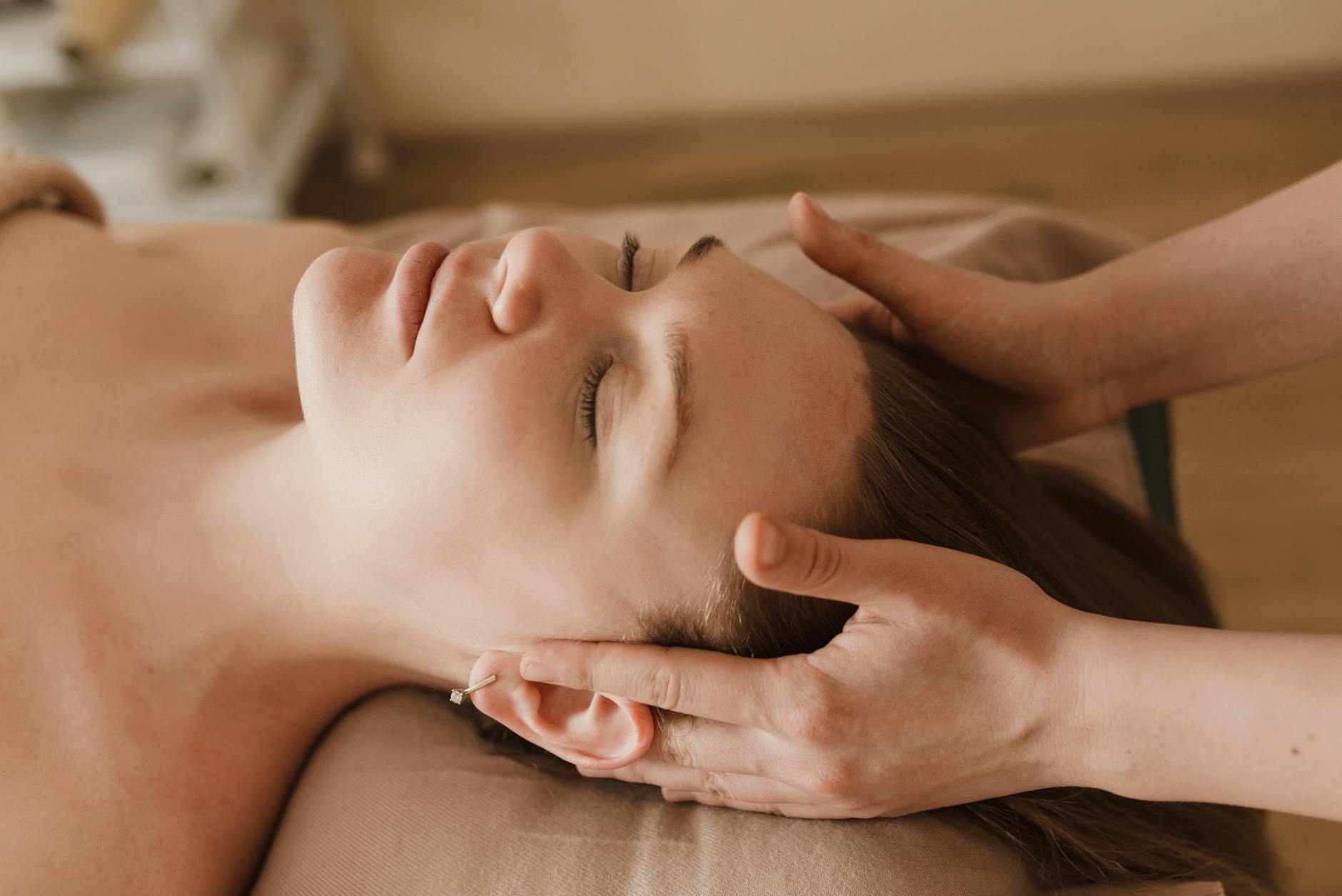
Herbal Medicine: Nature’s Pharmacy Explained
Ever wonder why your grandma swore by that special tea when you had a cold? She was tapping into something humans have known for thousands of years – plants can heal.
Herbal medicine isn’t some new-age trend. It’s actually the original medicine cabinet. Before pharmaceutical companies and white lab coats, people turned to leaves, roots, and flowers to feel better.
What makes herbs so powerful? They’re packed with compounds that can:
-
Fight bacteria and viruses
-
Calm your nervous system
-
Support your immune system
-
Help your body detox
Some herbs have become superstars in the wellness world:
| Herb | Common Uses | How It Works |
|---|---|---|
| Echinacea | Colds, flu | Boosts white blood cells |
| Turmeric | Pain, inflammation | Contains curcumin that fights inflammation |
| Valerian | Insomnia, anxiety | Increases GABA in the brain |
| St. John’s Wort | Mild depression | Affects serotonin levels |
| Ginger | Nausea, digestion | Soothes stomach lining |
The beauty of herbs? They don’t just target one symptom. They work holistically, addressing multiple body systems at once.
But here’s the thing – herbal medicine isn’t just about popping a supplement. The whole approach matters. Traditional herbalists look at your entire health picture before recommending remedies.
And no, you don’t need to forage in the forest. Many effective herbs might be sitting in your kitchen right now. That oregano in your pasta sauce? It’s antibacterial. The cinnamon in your oatmeal? It helps regulate blood sugar.
Energy Healing: Reiki, Qi Gong, and Therapeutic Touch
Feel skeptical about someone waving their hands over you to heal? I get it. But there’s more to energy healing than meets the eye.
These practices work with the idea that we’re not just flesh and blood – we’re also energy. When that energy gets blocked or imbalanced, health problems can follow.
Reiki practitioners don’t even need to touch you. They act as channels for universal energy, directing it to areas of your body that need healing. Many people report feeling warmth, tingling, or deep relaxation during sessions.
Qi Gong (pronounced “chee-gung”) combines movement, breathing, and meditation to balance your qi – your life force energy. It’s like acupuncture without the needles, using your own movements to clear energy pathways.
A friend tried Qi Gong for her chronic migraines after medications failed her. Six months later, her headache frequency dropped by 70%. Coincidence? Maybe. But thousands report similar experiences.
Therapeutic touch, developed by nurses, involves practitioners moving their hands slightly above your body to detect and correct energy imbalances. It’s actually taught in some nursing schools because patients consistently report pain reduction.
What’s fascinating is that science is catching up. Research shows these therapies can:
-
Lower blood pressure
-
Improve immune function
-
Accelerate wound healing
-
Decrease pain perception
Energy healing isn’t about replacing conventional treatment. It’s about complementing it, addressing aspects of health that drugs and surgery can’t touch.
Mind-Body Interventions: Meditation, Yoga, and Tai Chi
Your body listens to everything your mind says. That’s not just a catchy quote – it’s the principle behind mind-body interventions.
Meditation isn’t about emptying your mind (impossible, by the way). It’s about noticing your thoughts without getting hijacked by them. Even five minutes daily changes your brain. Regular meditators show more gray matter in areas controlling attention and emotional regulation.
I struggled with meditation for years until someone explained it’s like training a puppy. Your mind will wander. Your job is just to gently bring it back, again and again.
Yoga has exploded in popularity, and not just because of cute leggings. This ancient practice combines physical postures, breathing techniques, and meditation to:
-
Improve balance and coordination
-
Reduce anxiety and depression
-
Enhance respiratory efficiency
-
Promote better sleep
Tai Chi, sometimes called “meditation in motion,” uses slow, flowing movements with deep breathing. It’s particularly beneficial for older adults, improving balance and reducing fall risk by up to 45%.
The research on these practices is stunning. They can literally change your genes, turning on those that fight inflammation and turning off ones that promote disease.
What’s most revolutionary about mind-body practices is how they put you in charge. You’re not passively taking a pill – you’re actively participating in your healing.
Manual Therapies: Chiropractic, Osteopathy, and Massage
Your body is talking. Are you listening? That knot in your shoulder or twinge in your back is trying to tell you something.
Manual therapies are about fixing alignment issues and releasing tension through hands-on techniques. They recognize that problems in one area affect the whole system.
Chiropractors focus primarily on the spine, using adjustments to correct misalignments that can cause pain and dysfunction. That “crack” you hear? It’s just gas being released from the joint – not bones breaking!
The results can be dramatic. Studies show chiropractic care can be as effective as medication for certain types of back pain, without the side effects.
Osteopaths take a broader approach, treating the entire musculoskeletal system. They use gentle stretching, resistance, and pressure techniques to improve circulation and mobility. They’re actually fully licensed physicians who can prescribe medications but often prefer manual treatments first.
And massage therapy – it’s not just a luxury spa treatment. Different techniques target specific issues:
-
Swedish massage for general relaxation
-
Deep tissue for chronic muscle tension
-
Trigger point therapy for pain relief
-
Myofascial release for increased mobility
-
Lymphatic drainage for reduced swelling
These therapies work through multiple mechanisms:
-
Breaking up scar tissue
-
Improving circulation
-
Reducing muscle guarding
-
Stimulating nerve pathways
-
Releasing natural painkillers
The touch aspect matters too. Human touch triggers oxytocin release, reducing stress and promoting healing. In our digital world, we’re often touch-deprived, making these therapies even more valuable.
Nutritional and Dietary Approaches to Healing
Food isn’t just fuel. It’s information. Every bite sends messages to your cells, telling them to inflame or heal, energize or slow down.
The food-as-medicine approach isn’t about counting calories or following rigid rules. It’s about understanding how different foods affect your unique body.
Anti-inflammatory diets focus on foods that cool the fire of chronic inflammation – the root of many diseases. They emphasize:
-
Colorful fruits and vegetables
-
Omega-3 rich foods like fatty fish
-
Nuts, seeds, and their oils
-
Herbs and spices like turmeric and ginger
-
Whole, unprocessed foods
Elimination diets temporarily remove common triggers like gluten, dairy, soy, and eggs, then reintroduce them one by one to identify personal sensitivities. They can be game-changers for digestive issues, skin problems, and autoimmune conditions.
Therapeutic fasting gives your digestive system a break, allowing your body to focus on repair rather than processing food. Even intermittent fasting (limiting eating to an 8-hour window) shows benefits for inflammation, brain function, and longevity.
Specific healing protocols target particular conditions. The GAPS diet for gut healing, the ketogenic diet for neurological issues, and the Mediterranean diet for heart health all have solid research behind them.
Nutritional approaches aren’t one-size-fits-all. Your ideal diet depends on your genetics, gut microbiome, activity level, and current health status.
The most powerful shift happens when you stop seeing food as the enemy and start seeing it as your ally in healing. That cookie isn’t “bad” – it just sends different signals than a blueberry. Understanding those signals puts you in control.
The Science Behind Holistic Healing
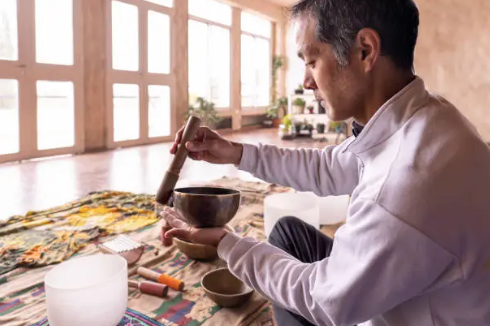
Gone are the days when alternative healing was dismissed as pure quackery. Science has actually started backing up what traditional healers have known for centuries.
Take acupuncture. For years, Western doctors rolled their eyes at the idea of tiny needles affecting your health. But now? Multiple studies show it works for chronic pain. A 2018 meta-analysis published in the Journal of Pain found that acupuncture’s effects last over time – it’s not just in people’s heads.
The research on meditation is even more impressive. Brain scans show meditation literally changes your gray matter. Harvard researchers discovered eight weeks of mindfulness meditation actually increased brain density in regions controlling learning, memory, and emotional regulation. That’s your brain physically changing from sitting quietly and breathing.
Herbal medicine is getting its scientific due too. Turmeric isn’t just for cooking anymore. Its active compound, curcumin, has powerful anti-inflammatory effects that match some pharmaceutical drugs – without the side effects. Studies show it helps with everything from arthritis pain to depression.
Even energy healing has some science behind it. Reiki practitioners claim to channel energy through their hands, which sounds pretty out there. But studies on hospital patients show Reiki sessions reduce pain, anxiety, and blood pressure. Scientists haven’t figured out exactly why it works, but the effects are measurable.
The research keeps piling up:
| Alternative Therapy | Scientific Finding | Source |
|---|---|---|
| Yoga | Reduces inflammation markers in the blood | Journal of Clinical Oncology, 2020 |
| Tai Chi | Improves balance and prevents falls in older adults | JAMA, 2019 |
| Aromatherapy | Certain essential oils reduce anxiety in medical settings | Complementary Therapies in Medicine, 2021 |
| Massage | Increases circulation and reduces cortisol levels | Journal of Alternative and Complementary Medicine, 2018 |
The coolest part? We’re just scratching the surface. As research methods get better and biases against traditional healing fade, we’re discovering new connections between these ancient practices and measurable health benefits.
Understanding the Placebo Effect and Mind-Body Connection
We’ve all heard someone dismiss alternative medicine with “it’s just the placebo effect.” But that misses something huge: the placebo effect is actually incredible.
Think about it. Your brain can create real physical changes in your body just because you believe something will help. That’s not a weakness – it’s a superpower.
Studies show placebos can trigger the release of endorphins – the same feel-good chemicals released during exercise. They can change brain activity patterns visible on scans. They can even affect heart rate, blood pressure, and inflammation levels. All without any “active” ingredient.
The mind-body connection goes way deeper than most people realize. Your thoughts and emotions aren’t just in your head – they’re swimming through your entire body as hormones and chemical messengers.
Stress is the perfect example. When you’re stressed, your body pumps out cortisol. Over time, elevated cortisol contributes to everything from weight gain to heart disease. That’s why stress reduction techniques like meditation aren’t just “feeling calm” – they’re preventing physical damage.
Depression shows this connection too. It’s not just feeling sad – it’s linked to increased inflammation throughout the body. That’s why holistic approaches addressing both mind and body often work better than treatments targeting just one aspect.
This connection explains why laughter really is good medicine. A good laugh boosts immune function, increases pain tolerance, and lowers stress hormones. Your body doesn’t distinguish between “physical” and “mental” healing – it’s all connected.
Some of the most compelling research comes from psychoneuroimmunology – the study of how your thoughts affect your immune system. Studies show that people with optimistic outlooks recover faster from surgeries and have better outcomes with chronic illnesses.
What does this mean for holistic healing? It means your beliefs and expectations are a crucial part of any treatment. The practitioner’s confidence, the healing environment, and your own faith in the process all contribute to physical outcomes.
The placebo effect isn’t a trick or delusion – it’s evidence of your mind’s remarkable power over your physical health. Holistic approaches tap into this power instead of ignoring it.
Integrative Medicine: When Conventional Meets Alternative
Integrative medicine might be the best healthcare innovation you’ve never heard of. It takes the best of conventional medicine – the life-saving surgeries, the evidence-based treatments – and combines it with alternative approaches that address the whole person.
The Cleveland Clinic, Mayo Clinic, and Johns Hopkins all have integrative medicine departments now. That’s how mainstream this approach has become.
What does integrative medicine look like in practice? Imagine getting surgery for cancer (conventional) while also receiving acupuncture to manage post-op pain and nausea (alternative). Or taking medication for high blood pressure while learning meditation techniques to naturally lower stress hormones that contribute to hypertension.
The integrative approach isn’t about choosing between approaches – it’s about using everything that works.
Dr. Andrew Weil, a pioneer in this field, describes it as medicine that “takes account of the whole person, including all aspects of lifestyle.” That means your doctor might ask about your sleep patterns, stress levels, and even your relationships – not just your symptoms.
Some benefits of the integrative approach:
-
Reduced medication dependency: Many patients can lower medication doses when complementary therapies address underlying issues
-
Better management of chronic conditions: Combining approaches often works better for complex, ongoing health problems
-
Fewer side effects: Alternative methods frequently have fewer adverse effects than pharmaceutical options
-
Increased patient satisfaction: People feel more involved in their healing process
The data backs this up. A landmark study at Duke University found that patients with coronary artery disease who received conventional treatment plus stress management had 74% fewer cardiac events than those receiving only conventional care.
Another study published in JAMA Oncology showed cancer patients receiving integrative care reported significantly better quality of life and fewer side effects during treatment.
The shift toward integrative medicine represents a profound change in how we think about healing. Instead of the either/or approach that dominated for decades, we’re moving toward both/and thinking.
Your primary care doctor might work alongside an acupuncturist, nutritionist, and movement specialist. Your treatment plan might include pharmaceuticals and botanical medicines. Your cancer center might offer both chemotherapy and meditation classes.
This blended approach acknowledges something important: healing is complex, and no single tradition has all the answers. By combining the precision of modern medicine with the holistic wisdom of traditional practices, integrative medicine offers something greater than the sum of its parts.
The science increasingly shows what many patients already know – our bodies don’t heal according to our medical system’s departmental divisions. True healing happens when we address the whole person, using every effective tool available.
Navigating Your Holistic Health Journey
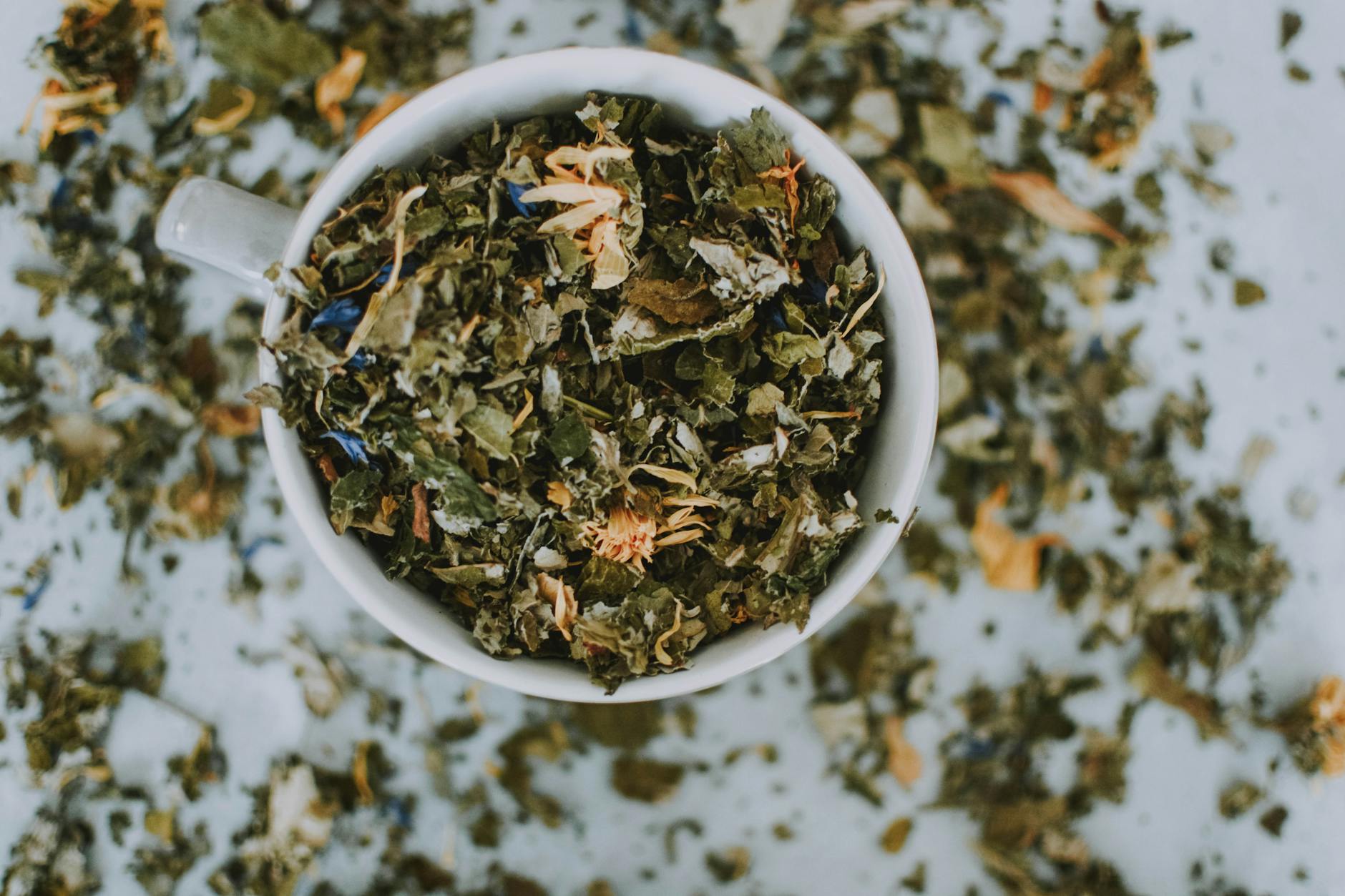
Finding Qualified Practitioners and Avoiding Quackery
The wellness world is packed with people claiming they can heal everything from cancer to heartbreak. But here’s the thing: not everyone with a certificate hanging on their wall is legit.
When you’re sick or struggling, you’re vulnerable. Scammers know this. They prey on desperation and promise miracles that conventional medicine couldn’t deliver. So how do you separate the real healers from the snake oil salespeople?
Start by checking credentials. A legitimate practitioner should have formal training from an accredited institution. Ask about their education, certifications, and how long they’ve been practicing. Don’t be shy about this! Anyone worth your time and money will happily share their background.
Red flags to watch for:
-
They promise miracle cures or guaranteed results
-
They bash conventional medicine completely
-
They can’t explain how their treatments work
-
They pressure you to buy expensive supplements (that they conveniently sell)
-
They discourage you from seeing other healthcare providers
I once met with a “detox specialist” who claimed she could cure my migraines by selling me a $2,000 cleanse program. When I asked for evidence, she just pointed to testimonials. That’s not evidence – that’s marketing.
Instead, look for practitioners who:
-
Collaborate with conventional healthcare providers
-
Have positive reviews from multiple sources
-
Can explain the science behind their methods
-
Acknowledge the limitations of their approach
-
Ask detailed questions about your medical history
Professional associations are your friends here. The American Association of Naturopathic Physicians, National Certification Commission for Acupuncture and Oriental Medicine, and similar organizations maintain directories of certified practitioners.
Word of mouth matters too. Ask friends, but dig deeper than “she’s amazing!” Find out specifically how they helped and what the experience was like.
Remember: healthy skepticism isn’t cynicism. It’s self-protection.
Creating a Personalized Wellness Plan
Cookie-cutter wellness plans don’t work because you’re not a cookie. You’re a complex human with your own unique biochemistry, lifestyle, stressors, and goals.
Your wellness plan should be as individual as your fingerprint.
First, do a personal health inventory. Ask yourself:
-
What are my biggest health concerns right now?
-
What drains my energy most?
-
When do I feel my absolute best?
-
What health goals matter most to me?
-
What habits am I willing to change?
-
What’s non-negotiable in my lifestyle?
This isn’t about judging yourself. It’s about gathering data.
Next, prioritize. You can’t overhaul everything at once. Pick 1-2 areas to focus on first. Maybe it’s improving sleep quality or reducing stress. Small, consistent changes beat grand gestures every time.
Your plan should include elements from these key pillars:
| Pillar | Examples | Why It Matters |
|---|---|---|
| Nutrition | Anti-inflammatory foods, elimination diets | Food is information for your body |
| Movement | Yoga, walking, strength training | Bodies are designed to move |
| Stress Management | Meditation, breathwork, nature time | Chronic stress undermines everything |
| Sleep | Consistent schedule, bedtime routine | Your body repairs during sleep |
| Connection | Community, relationships, purpose | Humans need belonging to thrive |
The trick is finding the right dose of each. Some people thrive on high-intensity workouts, while others need gentle movement. Some benefit from intermittent fasting, while others need regular meals.
Track what works. Keep a simple journal noting how different foods, activities, or practices affect your energy, mood, and symptoms. Patterns will emerge that no practitioner could predict.
And give it time. Your body didn’t develop imbalances overnight, and it won’t rebalance overnight either. Commit to at least 90 days before deciding if an approach works.
Your plan should evolve as you do. What served you at 30 might not serve you at 50. Check in with yourself regularly and adjust accordingly.
Complementary Approaches to Chronic Condition Management
Chronic conditions are often where conventional medicine falls short. Managing symptoms forever isn’t healing. This gap is where complementary approaches shine brightest.
Take autoimmune conditions. Conventional treatment typically focuses on suppressing the immune system. But complementary approaches ask: “Why is the immune system overreacting in the first place?”
For each chronic condition, there’s a spectrum of evidence-based complementary approaches:
For inflammatory conditions (arthritis, IBD, etc.):
-
Anti-inflammatory diets like Mediterranean or Autoimmune Protocol
-
Targeted supplements like omega-3s, curcumin, and quercetin
-
Mind-body practices that reduce inflammatory markers
-
Manual therapies to improve circulation and lymphatic flow
For hormone imbalances:
-
Stress management (cortisol affects all other hormones)
-
Sleep optimization
-
Specific herbs like maca, ashwagandha, or vitex
-
Environmental toxin reduction
For chronic pain:
-
Acupuncture (with solid research behind it)
-
Movement therapies like Feldenkrais or Alexander Technique
-
Cannabis or CBD where legal and appropriate
-
Mindfulness-based pain reduction
The key is integration. These approaches work best alongside conventional care, not in place of it.
Take Sandy, a client with fibromyalgia. Her pain medication helped during flares, but didn’t prevent them. By adding gentle yoga, dietary changes, and acupuncture, her flares decreased by 70%. Her medication remained important but became her backup, not her primary strategy.
For any chronic condition, assemble your team. This might include:
-
Your primary doctor
-
A functional medicine practitioner
-
A body worker or movement specialist
-
A mental health professional
-
A nutrition expert
They don’t all need to be paid professionals. Support groups, both online and in-person, provide invaluable wisdom from those walking your path.
Document your journey. Track symptoms, interventions, and results. This data helps you and your practitioners refine your approach over time.
Insurance Coverage and Affordability Considerations
Let’s talk money. Because holistic health can get expensive fast if you’re not careful.
The frustrating reality: many complementary approaches aren’t covered by traditional insurance. But don’t give up before exploring all options.
First, check what your insurance actually covers. Surprises happen. Many plans now cover:
-
Acupuncture (especially for pain management)
-
Chiropractic care
-
Massage therapy (with a prescription)
-
Nutritional counseling
-
Some mind-body programs like yoga for specific conditions
Call your insurance company directly. The magic phrase: “Is this service medically necessary for my diagnosed condition?” Sometimes coverage depends on how it’s coded or prescribed.
HSAs and FSAs are your friends. These tax-advantaged accounts can often be used for alternative treatments that insurance won’t cover.
If you’re paying out-of-pocket, prioritize what gives you the biggest return. Maybe one-on-one sessions with a nutritionist matter more than expensive supplements. Or perhaps group yoga classes benefit you more than private sessions.
Ask about sliding scales. Many holistic practitioners offer income-based pricing but don’t advertise it. Just ask: “Do you offer any payment plans or reduced rates?”
Community resources are gold mines. Look for:
-
Community acupuncture clinics (group settings at lower prices)
-
Meditation centers with free or donation-based classes
-
Herb co-ops for affordable supplements
-
Teaching clinics where students practice under supervision
For supplements, quality matters but so does necessity. Have your levels tested before supplementing, and prioritize food sources when possible. The most expensive supplement isn’t always the best.
The DIY approach works for some aspects of holistic health. You can learn self-massage, cooking skills, or meditation practices through free online resources.
Remember that investment now may save healthcare costs later. Prevention is almost always cheaper than treatment. But be strategic about where you spend.
Remember when traditional healing meant mortar and pestle, herbal brews, and hands-on techniques passed down through generations? Well, those practices aren’t going anywhere, but they’re getting a serious tech upgrade.
Digital platforms now connect patients with traditional healers across continents. Can’t find an Ayurvedic practitioner in your small town? No problem. Video consultations have made these specialists accessible to everyone with an internet connection.
Apps tracking your dosage of herbal remedies? Yep, that’s a thing now. Smart devices monitoring your response to acupuncture? Already happening. The marriage between ancient wisdom and cutting-edge technology isn’t just convenient—it’s revolutionizing how we access these healing traditions.
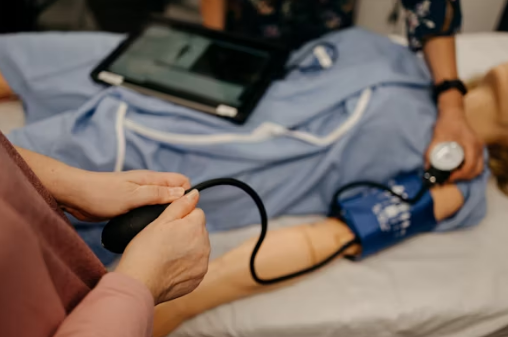
I talked to Dr. Maya Chen, who combines Traditional Chinese Medicine with digital health monitoring. She told me, “My patients wear sensors that track their qi imbalances between appointments. This data helps me adjust treatments with precision that would make my ancestors both bewildered and proud.”
Virtual reality has even entered the scene. Meditation apps now offer immersive experiences that transport users to Tibetan mountains or peaceful forests—places our stressed-out ancestors could only imagine visiting.
What’s really cool is how AI is helping document and preserve healing practices that might otherwise disappear. Machine learning algorithms are cataloging thousands of medicinal plants and their traditional uses before this knowledge is lost forever.
But the tech isn’t just about preservation—it’s about validation too. Scientific instruments now measure the effects of practices like Reiki and sound healing, showing changes in brain waves, stress hormones, and inflammation markers that skeptics can’t easily dismiss.
And blockchain? It’s ensuring the authenticity of traditional remedies. When you buy that expensive ginseng extract, blockchain tracking confirms it really came from the mountains of Korea and wasn’t grown in some industrial facility.
Growing acceptance within mainstream healthcare systems
The walls are coming down, folks. Traditional medicine is no longer relegated to the fringes of healthcare.
Major hospitals now offer integrative medicine departments. Mayo Clinic, Cleveland Clinic, Johns Hopkins—these bastions of conventional medicine have embraced acupuncture, mindfulness, and nutritional approaches alongside their high-tech treatments.
Insurance companies have joined the party too. Coverage for chiropractic care, acupuncture, and massage therapy has become common in many plans. Some even cover naturopathic doctor visits—something unheard of twenty years ago.
Medical schools are changing their tune as well. Most now include courses on integrative approaches, teaching tomorrow’s doctors that pills and surgery aren’t the only tools in the healing toolbox.
The numbers back this up. A recent survey showed 89% of hospitals now offer some form of complementary medicine services. That’s not fringe—that’s mainstream.
Why the shift? Patients demanded it. When people experience results from alternative approaches, they tell their doctors. And smart healthcare systems listen.
Research funding has followed. The National Institutes of Health now dedicates millions to studying everything from herbal interactions to the mechanisms behind acupuncture’s pain relief effects.
Dr. James Wong at Northwestern Medical Center told me, “Ten years ago, suggesting meditation to my colleagues would have raised eyebrows. Today, we have a meditation room in our oncology department and refer patients there regularly.”
What’s particularly interesting is how this acceptance varies globally. Countries like China, India, and Switzerland have fully integrated traditional medicine into their national healthcare systems. The US and UK are catching up, though somewhat cautiously.
The WHO’s recognition of traditional medicine in its International Classification of Diseases was a game-changer. It legitimized these approaches in the eyes of global health authorities and paved the way for more research and implementation.
Sustainability and ethical sourcing of natural remedies
The dirty secret of the herbal medicine boom? Some popular remedies are being harvested to extinction.
Wild American ginseng populations have plummeted. Sandalwood faces similar threats. As demand skyrockets, sustainability becomes not just an environmental issue but an existential one for alternative medicine itself.
Smart companies are waking up to this reality. Vertical farming operations now grow medicinal herbs in controlled environments, ensuring quality while reducing environmental impact. These operations use 95% less water and eliminate the need for pesticides.
Certification programs have emerged too. Just like “organic” or “fair trade” labels for food, “sustainably wild-harvested” certifications help consumers make ethical choices about their remedies.
Indigenous communities, often the original stewards of medicinal plants, are finally getting recognition for their intellectual property. Benefit-sharing agreements ensure these communities profit when their traditional remedies hit global markets.
“We’ve been using this plant for generations,” said Elena Vargas, a traditional healer from Peru. “Now pharmaceutical companies make millions from it. At least now we get some compensation and can ensure the plant doesn’t disappear.”
Regenerative harvesting practices are gaining traction too. Rather than clear-cutting medicinal forests, harvesters take only what allows populations to recover and thrive. It’s not just better for the planet—it ensures these medicines remain available for future generations.
The carbon footprint of shipping herbs globally has prompted a revival of local medicinal gardens. Community herbalists are teaching people to grow healing plants in their own backyards, reducing transportation emissions while connecting people directly to their medicine.
Empowering communities through traditional knowledge preservation
Traditional healing knowledge is disappearing faster than rainforest acres. When an elder dies without passing on their knowledge, we lose centuries of medicinal wisdom forever.
Digital archives are helping stem this tide. Projects like the Traditional Knowledge Digital Library document thousands of traditional formulations, protecting them from biopiracy while ensuring they’re not lost to time.
Community-based learning programs have sprung up worldwide. In Hawaii, young people apprentice with kahuna lapa’au (healing priests) to learn native plant medicine. Similar programs exist from the Amazon to Australia, creating new generations of knowledge keepers.
Universities are partnering with traditional healers too. At the University of Nairobi, Ph.D. students work alongside village herbalists, validating traditional remedies through scientific methods while respecting indigenous knowledge frameworks.
“Our approach isn’t about proving traditional medicine ‘works’ by Western standards,” explained Dr. Ngugi, who leads the program. “It’s about creating dialogue between knowledge systems and ensuring ancient wisdom survives in a form useful to future generations.”
These preservation efforts directly empower economic development. Communities with protected healing traditions can develop ethical herbal enterprises, wellness tourism, and educational programs that provide sustainable livelihoods.
The true power of knowledge preservation lies in healthcare sovereignty. When communities maintain their healing traditions, they’re less dependent on external healthcare systems that may be expensive, inaccessible, or culturally inappropriate.
Women, traditionally the keepers of family healing knowledge in many cultures, often lead these preservation movements. In Guatemala, midwives who once practiced in secret now run training centers, passing on knowledge while advocating for legal recognition of their practice.
What’s clear is that preserving traditional medicine isn’t about nostalgia—it’s about maintaining diverse approaches to human health in a world where one-size-fits-all solutions rarely work. And that diversity might just be what saves us when facing new health challenges in an uncertain future.
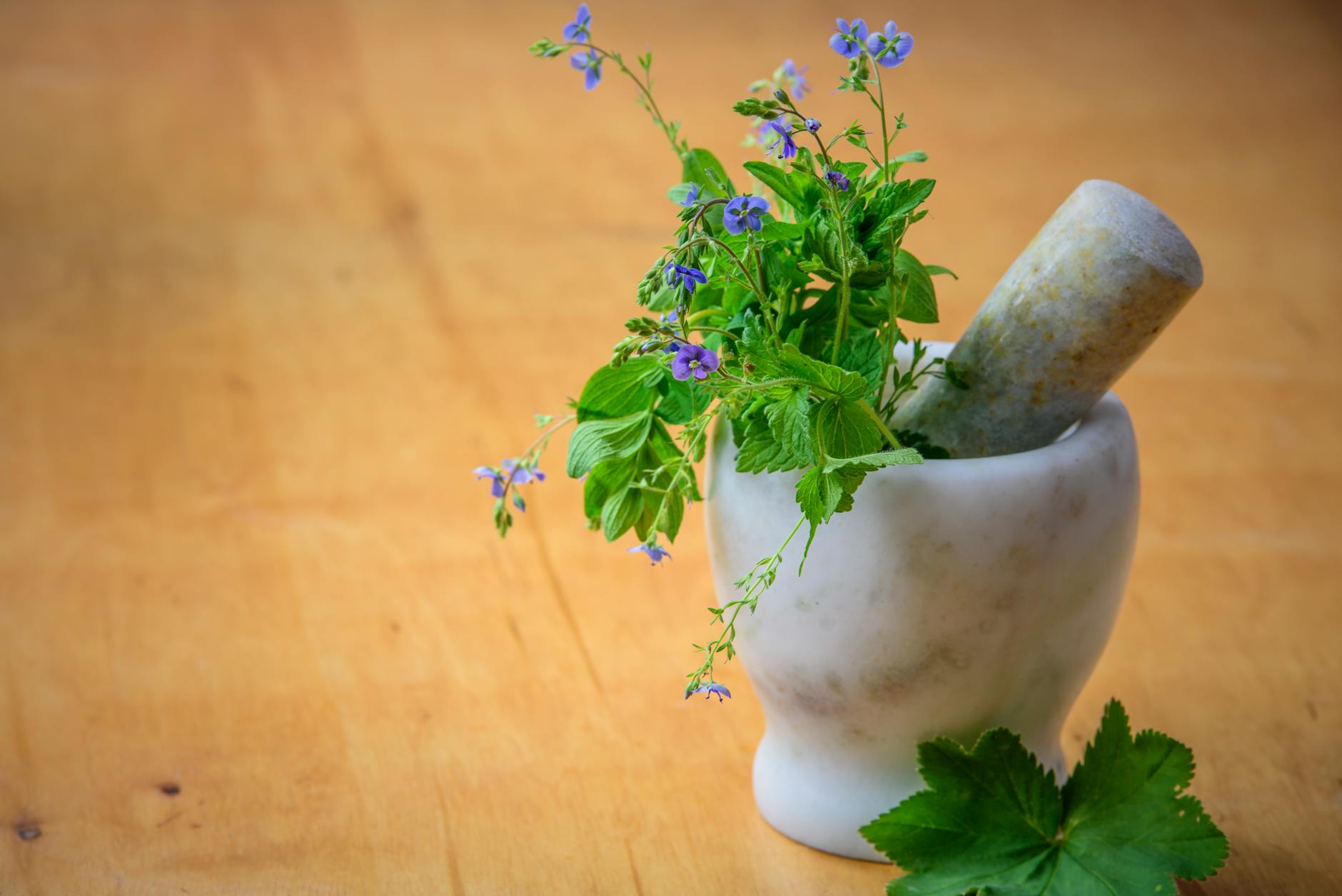
The vast world of alternative medicine offers a rich tapestry of healing traditions from across the globe, from ancient practices like acupuncture and Ayurveda to modern approaches like naturopathy and energy healing. Each therapy presents unique benefits, whether it’s stress reduction through meditation, pain management through acupuncture, or immune support through herbal medicine. While scientific research continues to validate many of these approaches, the true power of holistic healing lies in its comprehensive view of wellness—addressing physical, mental, emotional, and spiritual aspects of health.
As you embark on your own holistic health journey, remember that alternative medicine works best as a complementary approach alongside conventional care. Start with research, consult qualified practitioners, and listen to your body’s responses. The future looks promising for these healing traditions as integration with conventional medicine grows and research expands. Your health is a personal journey—embrace the wisdom of diverse healing traditions while making informed choices that honor your unique needs.
